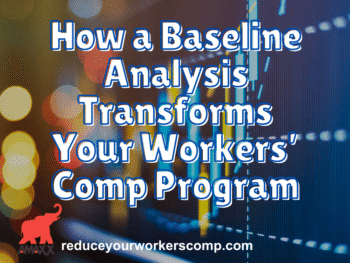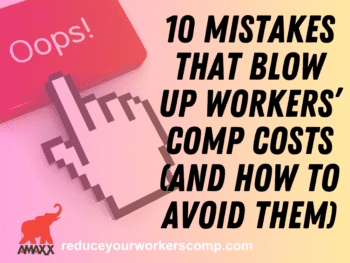Data analytics, the science of examining raw data and organizing the data to draw conclusions, is the new “it” topic in workers’ compensations. The use of computers to “mine the data” seems to be the cutting edge thing to do. Data mining is presented as if it is the latest discovery to make the risk manager or workers’ compensation manager job easy. But, data mining by computers is not new to many insurance professionals who have been doing it for decades.
Basic Loss Run Information Is Most Valuable To Workers Comp Manager
Early on smart workers’ compensation professionals started using the information they had which was given to them originally as a paper printout from the computer, the Loss Run. While current super computers can tell you how many fracture left pinkie fingers you will have in 2014 based on their analytics of the data for 2012 or 2013, the information that is most valuable to the workers’ compensation manager or risk manager is still the basics that can be obtained from your Loss Run.
As insurers, self-insured employers and third party administrators are in the business of making money for their company and their stockholders, the data information that has the most value is the information that can be analyzed to control and lower the cost of workers’ compensation claims. With modern computers, the workers’ compensation professional can custom design their Loss Run to provide the information needed.
In years past, Loss Runs were frequently designed to provide:
• The amount paid on medical benefits and the percentage of increase or decrease over the past month, quarter and year.
• The amount paid on indemnity benefits and the percentage of increase or decrease over the past month, quarter and year.
• The amount paid on claim expenses and the percentage of increase or decrease over the past month, quarter and year.
• The number of open claims and the percentage of increase or decrease over the past month, quarter and year
Specific Data That Comes From Data Mining
With data mining, the Loss Run, or if you don’t need identification of specific claims, a computer report, the workers’ compensation professional can obtain information to make decisions that impact your workers’ compensation program. Some data mining examples would include:
• Identifying the percentage of employee’s, and the departments where they work, who get hurt during their first month of employment. This information could be used to identify insufficient training issues, or identify poor hiring practices.
• Identifying the safety gear, equipment or tools in use at the time of the injury. This information could be used to manage or alter the safety program to prevent unsafe work conditions.
• Identifying the departments and sub-groupings down to the individual supervisor, where injuries are occurring. This information could be used to identify managers or supervisors who are not taking the safety rules and regulations seriously.
• Document the lag time between the date of the accident and the date the injury was reported to the employer. This information could be used to improve the reporting procedures, reducing the time the employee is off work and impacting the overall medical cost of the claim.
• Document the lag time between the date the accident was reported to the employer and the time injury was reported to the claims administrator. This information also could be used to improve the reporting procedures, reducing the time the employee is off work and impacting the overall medical cost of the claim.
• Identifying by department, and by sub-grouping down to the individual supervisor, on the timeliness of reporting claims. This information could be used to identify departments or supervisors who do not report their claims timely.
• Identify the employees who have had prior workers’ compensation claims. While two claims by the same employee may be the employee’s carelessness or bad luck, five claims by the same employee could justify a referral to the Special Investigations Unit.
• Sorting the claims by adjuster and identifying the length of time each claim has been open and the average length of time claims handled by the individual adjuster are open. This information could be used to identify which adjusters get their claims closed timely.
• Sorting the claims by adjuster and identifying the amount paid on each claim and the average cost of claims assigned to the adjuster. This information could be used to identify which adjusters do the best overall job of managing their claims.
These are just some of the many ways you can mine your data to improve your workers’ compensation program. If you can identify an issue, or what you think might be an issue, your IT professional should be able to create a computer program to provide you with the data upon which you can make decisions.
Whether you are using your Loss Run or a data pull that does not include claim specific information, data analytics when properly used is a great way to lower your workers’ compensation cost.
Author Michael B. Stack, CPA, Director of Operations, Amaxx Risk Solutions, Inc. is an expert in employer communication systems and part of the Amaxx team helping companies reduce their workers compensation costs by 20% to 50%. He is a writer, speaker, and website publisher. www.reduceyourworkerscomp.com. Contact: mstack@reduceyourworkerscomp.com.
©2013 Amaxx Risk Solutions, Inc. All rights reserved under International Copyright Law.












